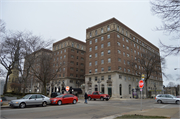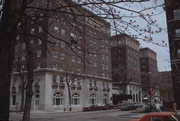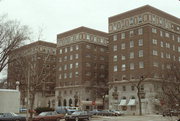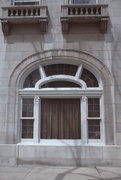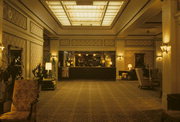| Additional Information: | A 'site file' exists for this property. It contains additional information such as correspondence, newspaper clippings, or historical information. It is a public record and may be viewed in person at the Wisconsin Historical Society, State Historic Preservation Office.
Original owner was Martin Brachman. Another map code is 5-3 on the LUQS #360 map.
Stepping through the Astor Hotel's domed entrance pavilion, with its stained-glass skylight, and into the luxurious lobby, with its chandeliers and painted wood paneling, is like traveling back to the elegant 1920s. The Astor was the first of several fashionable residential hotels to be built after World War I in this lower-east-side neighborhood, with its breezy air, lakefront views, downtown location, and proximity to the Prospect Avenue "Gold Coast." Walter Schroeder, a hotel tycoon who also owned Milwaukee’s Schroeder and Wisconsin hotels and built Madison’s Belmont Hotel lived here in the Astor.
The original, easternmost part of the hotel, completed in 1920, was U-shaped, with a one-story lobby filling the inside of the "U." In 1925, an L-shaped section was added on the west, creating the overall form of an "E." The design shows the base-shaft-capital scheme common to tall office buildings. The hotel’s lower floors are clad in smooth limestone. The next five floors are clad in plain brick, forming the “shaft.” Finally, the top story, the “capital,” articulated by another beltcourse, has round-arched windows, and stone panels inset with brick highlights.
In the prosperous decade after World War I, residential hotels like the Astor promised comfortable and fashionable living for wealthy retirees and for affluent professionals. These hotels offered the prestige of a downtown address, and provided housecleaning and dining-room services, eliminating the need for residents to hire servants or perform their chores. The ground floor of the Astor earned income for the owner accommodating a Rolls Royce showroom and an Oriental rug shop, appropriate for the hotel's wealthy residents.
Today the Astor is one of only two large residential hotels left in this area. The other is the Knickerbocker, located one block east at 1028 East Juneau Avenue. The Astor still houses permanent and short-term residents, while the Knickerbocker was converted to condominiums in the 1970s. |
|---|

